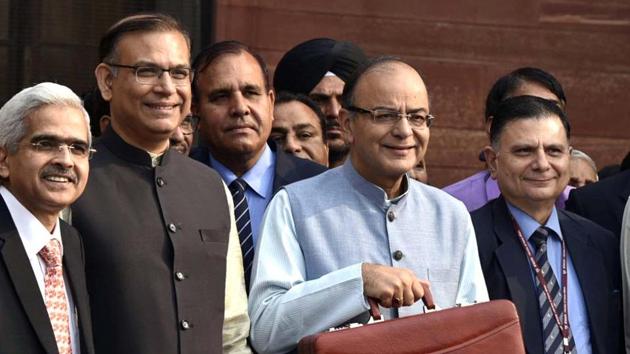Budget 2017: It is time Arun Jaitley opted for fiscal expansionism
The present-day economic context and evidences from the past make a compelling case for the government to loosen its purse strings. Should the finance minister opt for a higher fiscal deficit, it ought to be on account of spending creates assets, jobs and an opportunity for inclusive growth
The budget finance minister Arun Jaitley unveils this week will be judged mostly for what it does to put the Indian economy back on the growth track. There are many ideas and propositions doing the rounds; the one I would pick is that of a fiscally expansionist budget.

It is time the finance minister opted for a higher fiscal deficit, even though it means undoing some of what was achieved through his previous three budgets -- a progressive reduction in both fiscal and revenue deficits that slipped to unviable levels during the second term of the UPA government. The present-day economic context and evidences from the past make a compelling case for the government to loosen its purse strings.
First, the context: Business confidence has fallen to a new low following demonetisation. Companies are shy of investing as consumer spending remains subdued. Demonetisation has also crippled the informal credit system -- a vital source of investment and growth in the Indian context in which the reach and access of the formal credit network is limited. As such, credit offtake from banks continues to be sluggish despite lowering of interest rates. In such a scenario, the onus of reviving both consumption spending and investment demand to fuel growth rests on the government.
What should Jaitley do then?
Before we get to that, how have his predecessors dealt with similar situations and what lessons can be learnt therefrom. The best growth years of the first decade of economic liberalisation – 1994-95 to 1996-97 – came after Manmohan Singh, then the finance minister, allowed fiscal deficit to go up to a high of 7.3% of GDP in 1993-94. The subsequent years not only saw a spike in GDP growth, but also witnessed a significant improvement in tax collections that guided P Chidambaram to deliver a “dream budget” in 1997. Through 1999 to 2002, a period during which India suffered the worst drought in a decade and the global economy was in turmoil following the 9/11 terror attack and the war on Iraq, the then finance minister Yashwant Sinha didn’t hesitate to set aside large allocations for infrastructure spending. The fiscal deficit in those years hovered around 6% of GDP, but laid the foundation for a very strong revival of economic growth and a “shining India” story. The period between 2003-04 and 2007-08 was the best ever for India’s economy, when growth averaged more than 8% annually, government revenues soared as did its spending on development projects and the fiscal deficit corrected to one of its lowest – 2.5% of GDP.
Jaitley would do well to lean on these experiences, when a higher fiscal deficit came on account of asset-creating capital expenditure. It didn’t slip because of tax giveaways as was the case in 2008-09 and 2009-10, when the UPA government decided to make big duty cuts to protect Indian businesses from a global financial crisis precipitated by the collapse large US financial firms such as the Lehmann Brothers. In fact, much of the problem the economy faces today can be traced to the mistake committed in those years.
In other words, should the finance minister opt for a higher fiscal deficit, it ought to be on account of higher spending under all such heads that create assets, jobs and an opportunity for inclusive growth. In his medium term fiscal policy statement before Parliament last year, Jaitley had proposed to reduce fiscal deficit from 3.5% of GDP this year to 3% each in 2017-18 and 2018-19. These numbers do allow for a progressive increase in capital spending, which has averaged at 1.8% of GDP in the past 10 years. But some economists believe, and I agree with them, that the finance minister could settle for a fiscal deficit that is higher up to 1% point than the target for next financial year. If he manages to do that while keeping revenue spending under check, it will mean a sizeable jump in capital spending and provide a big fillip to the broader economy. It will also mean he will have to refrain from offering too many tax breaks or pandering to the demands of his party colleagues for populist spending that could win votes in poll-bound states of Uttar Pradesh, Punjab or Goa – although a decision on the latter would have already been handed down from the south block.
Some tax giveaways will be in order – especially for the individual tax payers and small-scale, labour-intensive enterprises – but these should be revenue-neutral and need to go hand-in-hand with better tax enforcement and compliance. Last, but not the least, he could look to partner states by offering them more money from the central exchequer and allowing them more room to borrow from the market. Such a move will help create more catalysts for growth, foster cooperative federalism and help in faster implementation growth-stimulating reform measures such as the GST.
Rajesh Mahapatra is the chief content officer, Hindustan Times.
Follow the author @rajeshmahapatra





